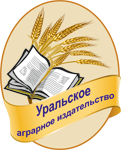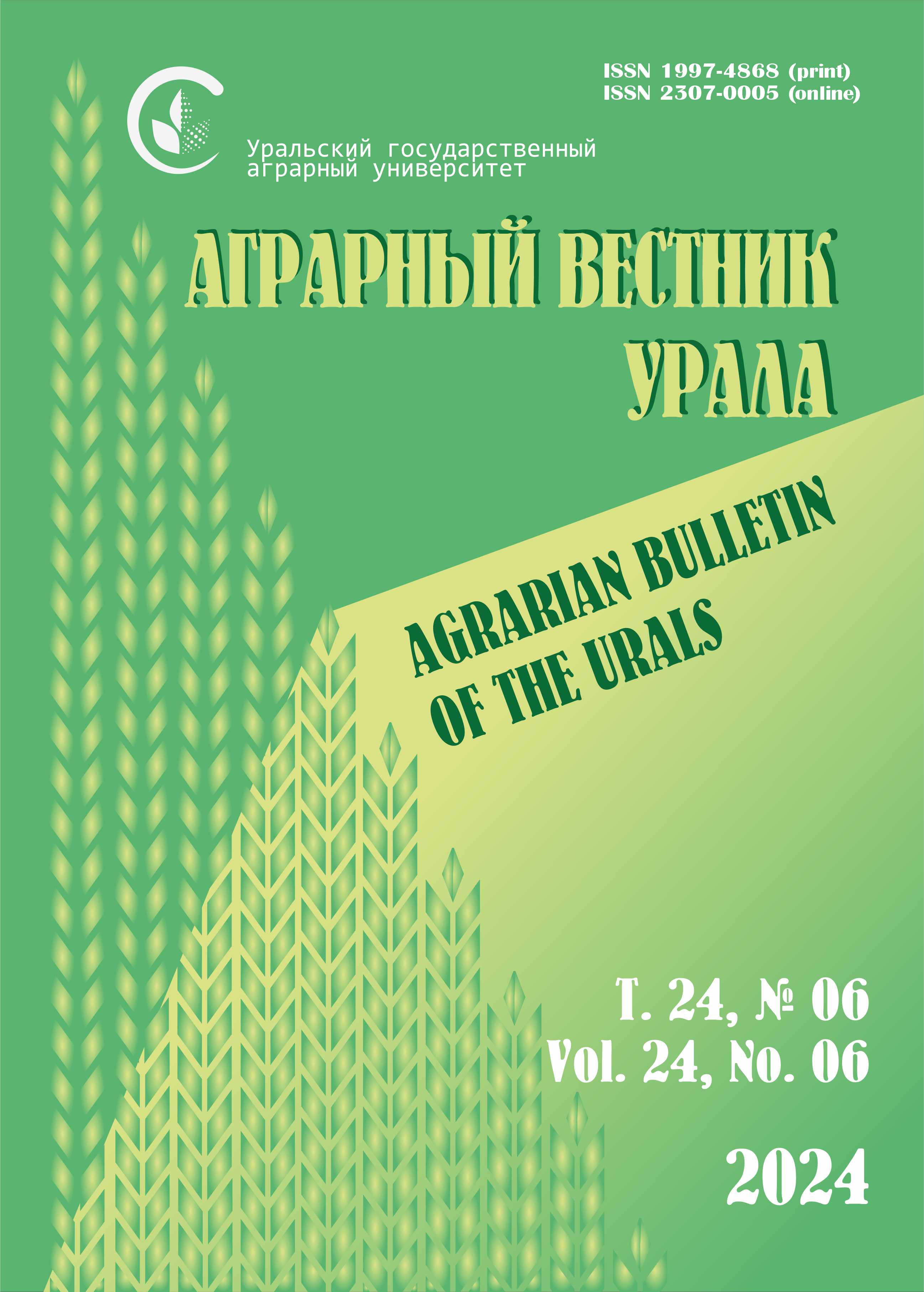Yekaterinburg, Russian Federation
Russian Federation
Abstract. The purpose. The research is aimed at solving the problem related to the development of technology for producing an environmentally friendly product of animal origin – lactose-free milk. This will solve the problem of consumption of milk and dairy products by people who do not tolerate milk sugar for physiological reasons. Analyzing, on the basis of a literary review, the current state of the issue of lactose-free milk production, it can be concluded that existing technologies have certain disadvantages due to changes in the composition of the initial product, or the significant complexity of the technological chain. The proposed development is based on a method of milk diafiltration consisting of several repetitive cycles. The cycle consists in the separation of milk by the ultrafiltration process into permeate (aqueous lactose solution) and concentrate (proteins, fat, lactose residues). Then pure water is added to the concentrate in a volume equal to the volume of the discharged permeate. For a scientifically based approach to the development of the proposed technology, it is necessary to conduct a study of ultrafiltration separation of milk, obtain optimal operating parameters of the process, determine the change in permeability and selectivity of membranes from lactose concentration, consider the possibility of obtaining lactose-free milk with different mass fraction of fat, determine the number of cycles of the membrane diafiltration process. Research methods. The study of the process of ultrafiltration separation of milk was carried out in laboratory conditions on a membrane installation using organic and inorganic membranes. The experiments determined the main characteristics of ultrafiltration membranes – permeability and selectivity, with varying parameters (parameter range: P = 0.15…0.5 MPa, t = 35…65 °C). Results. Based on the experimental data obtained, by processing them and optimizing the parameters, optimal modes of the milk separation process by ultrafiltration were obtained. The following parameters are defined: the velocity of the product in the supramembrane space, the operating pressure of the separation process, its temperature. The preferred ultrafiltration membranes for the membrane-milk system have been selected. Scientific novelty. To develop a technology for producing lactose-free milk, for the first time a number of studies and experiments were carried out, such as changing the permeability and selectivity of membranes from the concentration of lactose, obtaining lactose-free milk with mass fraction of fat the number of cycles of the membrane diafiltration process was determined.
lactose, lactose-free milk, ultrafiltration, diafiltration, organic membranes, inorganic membranes, selectivity, permeability
1. Evdokimov I. A., Volodin D. N., Gridin A. S., Kulikova I. K., Anisimov G. S. Sovremennye podhody k klassifikacii laktozosoderzhaschego syr'ya // Syrodelie i maslodelie. 2022. № 4. S. 34–37. DOI:https://doi.org/10.31515/2073-4018-2022-4-34-37. EDN: https://elibrary.ru/HHGPIY
2. Mel'nikova E. I., Rudnichenko E. S., Kuznecova S. A. Molochnye ingredienty – buduschee molochnoy industrii // Molochnaya promyshlennost'. 2023. № 5. S. 13–15. DOI:https://doi.org/10.21603/1019-8946-2023-5-21. EDN: https://elibrary.ru/QEQPGQ
3. Evdokimov I. A. Rol' nauchnyh issledovaniy v sozdanii vysokotehnologichnyh proizvodstv v molochnoy otrasli // Pererabotka moloka. 2022. № 2 (268). S. 6–11. DOI:https://doi.org/10.33465/2222-5455-2022-2-6-11. EDN: https://elibrary.ru/NDWZXZ
4. Alibekov R. S., Ovchinnikova O. Yu. Laktoznaya neperenosimost' i bezlaktoznoe moloko // Izvestiya Kyrgyzskogo gosudarstvennogo tehnicheskogo universiteta im. I. Razzakova. 2019. № 1. S. 37–43.
5. Ponomarev A. N., Mel'nikova E. I., Stanislavskaya E. B., Samoylova V. N. Moloko kak syr'e dlya proizvodstva pischevyh ingredientov. Chast' 1. Frakcionirovanie obezzhirennogo moloka s cel'yu polucheniya ingredientov // Molochnaya promyshlennost'. 2021. № 4. S. 34–36. DOI:https://doi.org/10.31515/1019-8946-2021-04-34-36. EDN: https://elibrary.ru/SMBBVC
6. Potoroko I. Yu., Kadi A. M. Y., Wang M., He M., Zhang Y., Chen X., Chnao T. Development of yogurt based on lactose-free milk with a functional bioactive compound // Bulletin of the South Ural State University. Series: Food and Biotechnology. 2023. Vol. 1, No. 2. Pp. 57–64. DOI: https://doi.org/10.14529/food230207; EDN: https://elibrary.ru/KEDJYV
7. Timkin V. A., Novopashin L. A., Minin P. S. Nekotorye aspekty razrabotki tehnologii bezlaktoznogo moloka s primeneniem baromembrannyh processov // Nauchno-tehnicheskiy vestnik: Tehnicheskie sistemy v APK. 2020. № 3 (8). S. 53–62. EDN: https://elibrary.ru/DHMQQF
8. Zambrini A. V., Donati E., Russo K., Piccikini D. Sposob proizvodstva bezlaktoznogo moloka. Patent na izobretenie RU 2766351 C2, 15.03.2022. Zayavl. 2019118566, byul. № 8. 25 s.
9. Gorina T. A. Normativno-tehnicheskaya dokumentaciya «Moloko pit'evoe nizkolaktoznoe i bezlaktoznoe» // Pererabotka moloka. 2022. № 4 (270). S. 30–32. EDN: https://elibrary.ru/PGWMKQ
10. Hramcov A. G., Anisimov S. V., Davydyanc L. E., Skorohodova M. V., Romahova V. Yu., Zhilina M. A. Issledovanie izomerizacii laktozy v processe proizvodstva molochnyh produktov // Molochnaya promyshlennost'. 2023. № 4. S. 67–70. DOI:https://doi.org/10.31515/1019-8946-2023-04-67-70. EDN: https://elibrary.ru/ZPHFGC
11. Loza N. V., Kutenko N. A., Brovkina M. A., Samkov A. A., Kruglova M. N. Vliyanie laktozy na transportnye svoystva ionoobmennyh membran // Membrany i membrannye tehnologii. 2023. T. 13, № 4. S. 301–311. DOI:https://doi.org/10.31857/S2218117223040041. EDN: https://elibrary.ru/RTBTEC
12. Dihanbaeva F. T., Tasturganova E. Ch. Razrabotka tehnologii bionapitkov na osnove verblyuzh'ego moloka s ispol'zovaniem drozhzhey, sbrazhivayuschih laktozu // Global Science and Innovations. Proceedings. 2020. S. 284–286. EDN: https://elibrary.ru/PKNQSQ
13. Gorlova A. I., Il'ina A. M. Fiziologicheskaya rol' laktozy nativnogo i gidrolizovannogo moloka: obzor // Vestnik Voronezhskogo gosudarstvennogo universiteta inzhenernyh tehnologiy. 2022. T. 84. № 2 (92). S. 57–61. DOI: https://doi.org/10.20914/2310-1202-2022-2-57-61; EDN: https://elibrary.ru/ITEWDK
14. Topnikova E. V., Ivanova N. V., Mordvinova V. A. Napravleniya racional'nogo ispol'zovaniya pahty pri proizvodstve molochnoy produkcii // Syrodelie i maslodelie. 2022. № 6. S. 42–45. DOI:https://doi.org/10.31515/2073-4018-2022-6-42-45. EDN: https://elibrary.ru/LPTJBW
15. Lozovskaya D. S., Dymar O. V. Tehnologicheskie svoystva moloziva // Molochnaya promyshlennost'. 2022. № 1. S. 55–57. DOI:https://doi.org/10.31515/1019-8946-2022-01-55-57. EDN: https://elibrary.ru/TQMWYB
16. Slavorosova E. V., Shevchuk V. B., Fialkova E. A., Goldenshlach O. N., Nechaev K. A. Perspektivnyy sposob pererabotki molochnoy syvorotki // Molochnaya promyshlennost'. 2022. № 12. S. 14–16. DOI:https://doi.org/10.31515/1019-8946-2022-12-14-16. EDN: https://elibrary.ru/ILJAKK
17. Ivory R., Mangan D., McCleary B. V. Lactose concentration in low-lactose and lactose-free milk, milk products, and products containing dairy ingredients by high sensitivity enzymatic method (K-lolac), collaborative study: final action 2020.08 // Journal of AOAC International. 2022. Vol. 105, No. 6. Pp. 1617–1624. DOI: 10.1093 /jaoacint /qsac070. DOI: https://doi.org/10.1093/jaoacint/qsac070; EDN: https://elibrary.ru/LPOYJT
18. Gilabert-Oriol G. Ultrafiltration membrane cleaning processes: optimization in seawater desalination plants. De Gruyter, 2021. 104 p. DOI:https://doi.org/10.1515/9783110715149. EDN: https://elibrary.ru/EPIJLV
19. Kashaninejad M., Razavi S. M. A. The effect of pH and NaCl on the diafiltration performance of camel milk // International Journal of Dairy Technology. 2021. No. 74 (3). Rr. 2431–2438. DOI:https://doi.org/10.1111/1471-0307.12774. EDN: https://elibrary.ru/LHTUDO
20. Shinde G. P., Kumar R., Reddy K. R., Nadanasabhapathi S., Dutt Semwal A. Effect of pulsed electric field processing on reduction of sulfamethazine residue content in milk // Journal of Food Science and Technology. 2022. Vol. 59, No. 5. Pp. 1931–1938. DOI:https://doi.org/10.1007/s13197-021-05207-0. EDN: https://elibrary.ru/RTSFTJ










